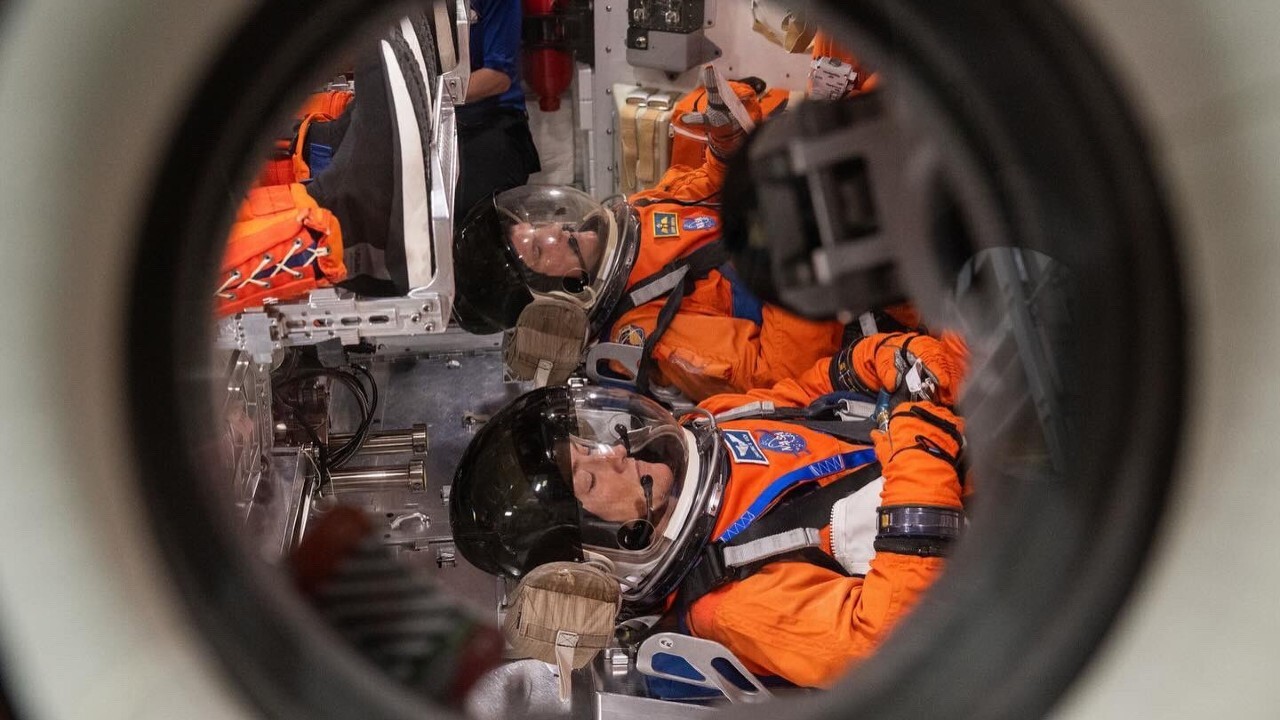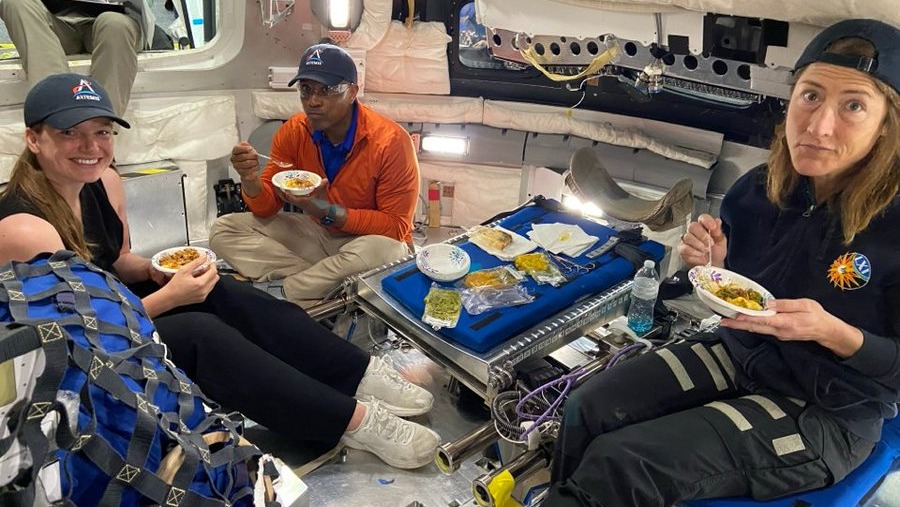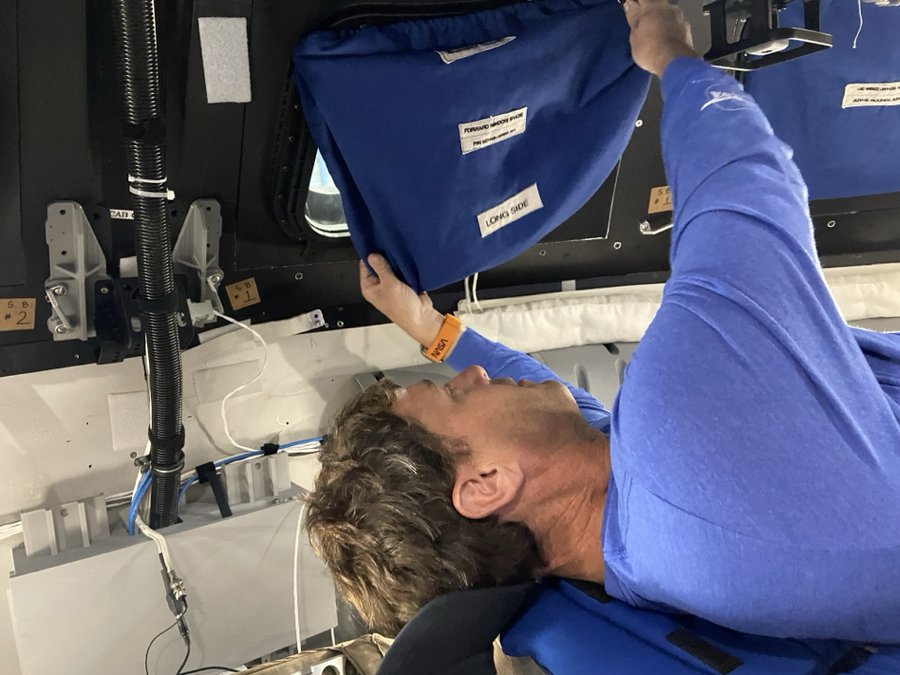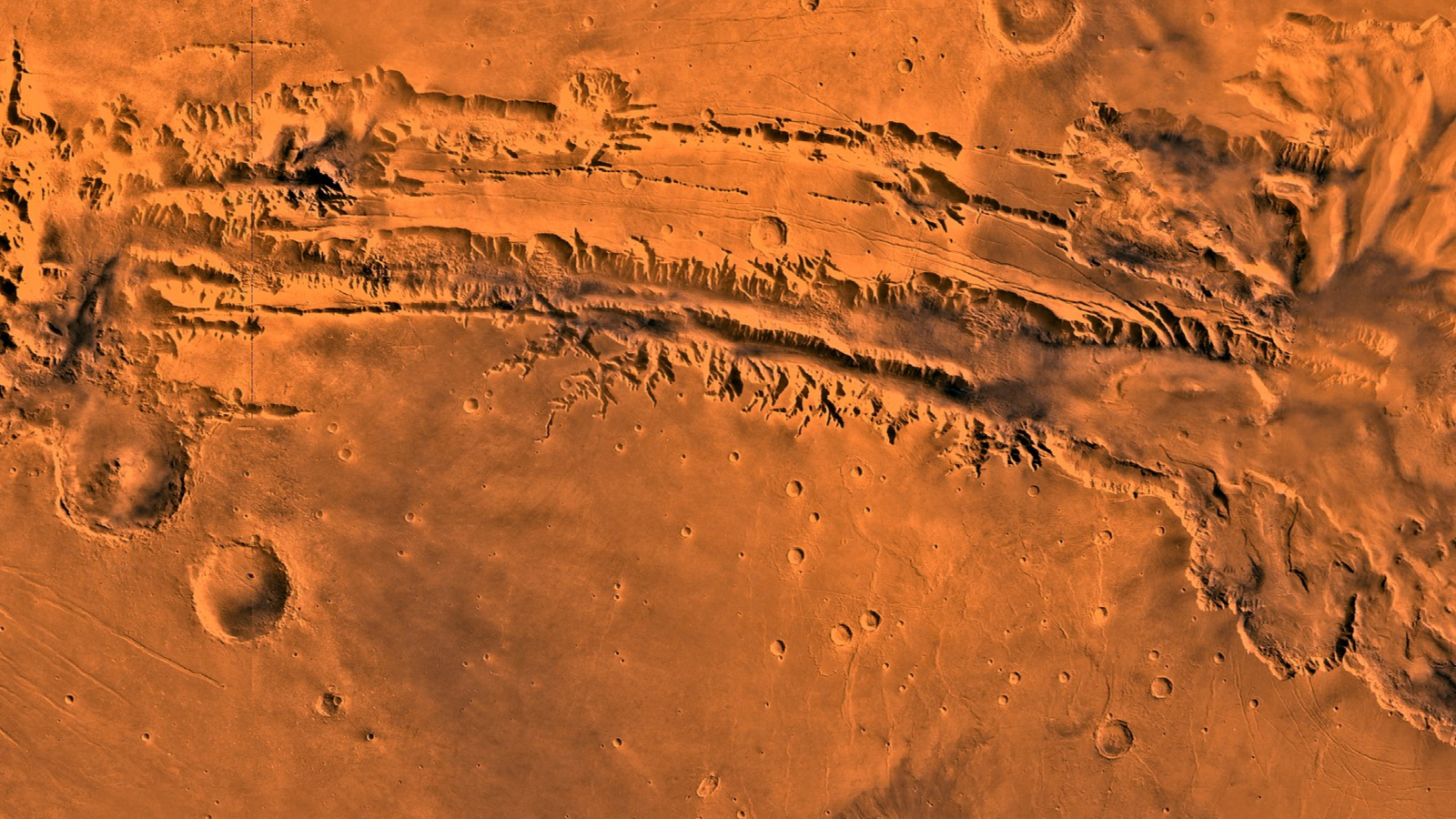Artemis 2 astronauts simulated a day in the life on their moon mission. Here's what they learned (exclusive)
'You have discovered comfort.'
Ever have one of those nightmares where you forget your pencil, or some key item, before a big test?
Astronauts flying to the moon face that situation in spades: Once everything is on the spacecraft and they're on the way, there's no way to add to or change anything on the Orion spacecraft. So the Artemis 2 crew practiced a "day in the life" of their moon mission, expected to fly there in 2025, to see if there were any little items they may have forgotten.
The astronaut quartet literally spent the day in an Orion mockup at NASA's Johnson Space Center, and included mission backup astronaut Jenni Gibbons from the Canadian Space Agency (CSA) as well. Physical space was at a premium. Gravity made things harder as people clambered around each other to get their tasks done.

But it was valuable practice, as three of the Artemis 2 crew told Space.com at NASA's Kennedy Space Center in early May prior to a launch attempt here for Boeing's Starliner spacecraft.
"One of the things that we've wanted to do as a crew is to start getting everything together that's going to be in the vehicle and start looking at how we're going to manage it," Jeremy Hansen, a mission specialist with CSA, said in staff office at KSC's press center. (His crew members say the simulation was his idea, although Hansen didn't take credit.)
"The training team did a great job," Hansen added. "They set up a day-long simulation, where we went through all of the activities in Day 1 of the of the launch profile. We didn't simulate launch. But once we got to orbit, we simulated getting things out, making sure the water system is working, setting up the toilet, removing the seats, [and asking] where are we going to store the spacesuits? We're just going through that whole choreography, all the way until we set up our sleeping bags and then go to bed."
Breaking space news, the latest updates on rocket launches, skywatching events and more!
Aside from Hansen, the Artemis 2 astronauts are NASA commander Reid Wiseman, NASA pilot Victor Glover (who will become the first Black person to leave low Earth orbit, or LEO) and NASA mission specialist Christina Koch (the first woman to go beyond LEO). Hansen will be the first non-American beyond LEO. They were assigned to the mission in April 2023, while Gibbons was named backup in November.
Related: Artemis 2 moon crew announcement felt like a Canadian history time warp

Wiseman said the astronauts were supported by their chief training officer, Jacki Mahaffey, as well as experts in systems and flight operations helping at both KSC and JSC.
Simulations inside spacecraft, Wiseman explained, are never easy: "It's very small, and you're cramped ... you're always on your knees and your hands. You can bump your head, and those sorts of things."
Four hours into the long day, Wiseman stuck his legs into a storage compartment and sat on the lid, searching for equipment inside. Wiseman said Hansen, seeing his crewmate sitting easier, quipped: "You have discovered comfort."

But such integrated sims are worth it, and in this case, having everyone on board allowed for a small-but-key design change to Orion: A cable box will be moved to another location in the spacecraft after the astronauts found themselves surrounded by long cables as the day progressed.
"By the end of the day, all the 17-foot cables that we had, we realize it's almost like charging four or five cell phones at home," Wiseman explained. "At the end of the day, you can have them all over your house, or you could have one charging station and everything can be plugged in right there."
Glover said "integrated immersive training" such as the Artemis 2 experience is essential for helping the crew get context about the physical dimensions in which they can work. That's essential to allow them to make use of every inch on the Orion spacecraft during their first day, which will be both long and busy.

While the crew will do some exercises together, at times they will be working on separate activities apart. "We've got to see that, and how that might work, and some of the challenges that might come from that," Glover said.
In January, Artemis 2's liftoff was delayed a year to September 2025 to address several technical issues for safety, including examining heat shield issues that Orion experienced during the uncrewed Artemis 1 test flight around the moon in late 2022.
NASA's Office of the Inspector General (IG) issued a report this month saying these issues "pose significant risks" to Artemis 2 safety. The report says NASA found over 100 areas on Orion's heat shield eroded "differently than expected" as it made a fiery re-entry to Earth's atmosphere.
Glover emphasized the astronauts are staying informed, that safety always comes before artificial timelines, and that the problem has been actively worked upon for more than 18 months now.
"This is not new," he said. "The IG report seems like a big deal to some folks, but we've been talking about that as one of our top issues since Artemis 1 landed, almost."
Join our Space Forums to keep talking space on the latest missions, night sky and more! And if you have a news tip, correction or comment, let us know at: community@space.com.

Elizabeth Howell (she/her), Ph.D., was a staff writer in the spaceflight channel between 2022 and 2024 specializing in Canadian space news. She was contributing writer for Space.com for 10 years from 2012 to 2024. Elizabeth's reporting includes multiple exclusives with the White House, leading world coverage about a lost-and-found space tomato on the International Space Station, witnessing five human spaceflight launches on two continents, flying parabolic, working inside a spacesuit, and participating in a simulated Mars mission. Her latest book, "Why Am I Taller?" (ECW Press, 2022) is co-written with astronaut Dave Williams.
